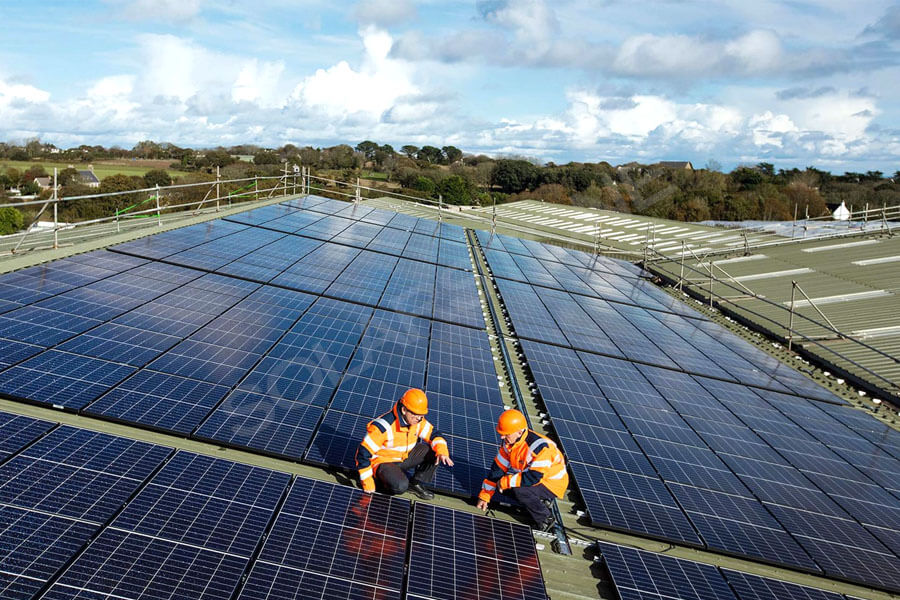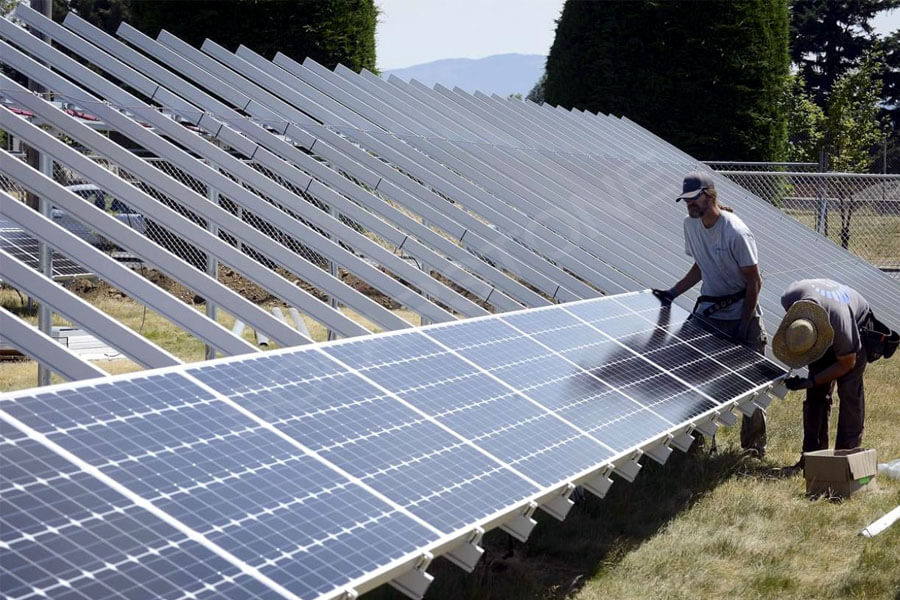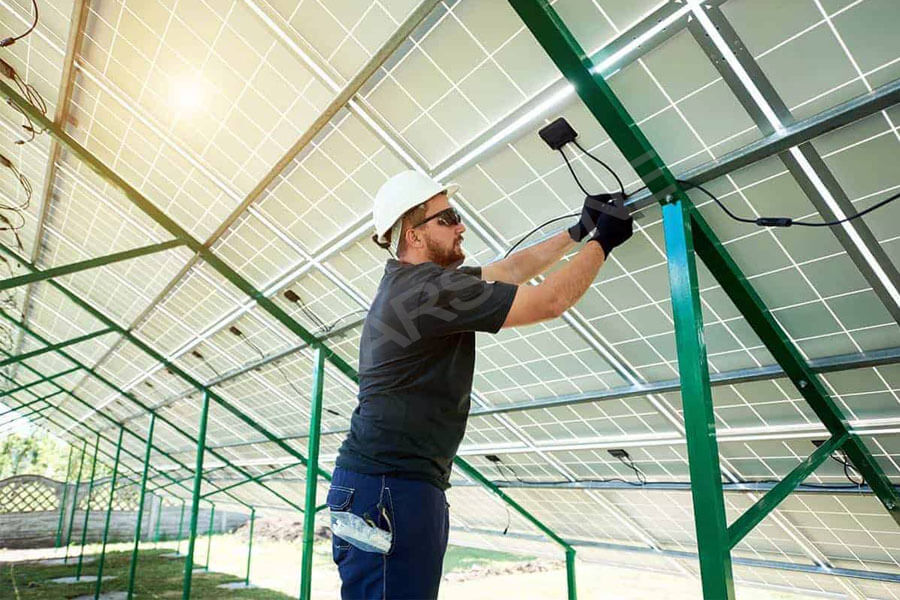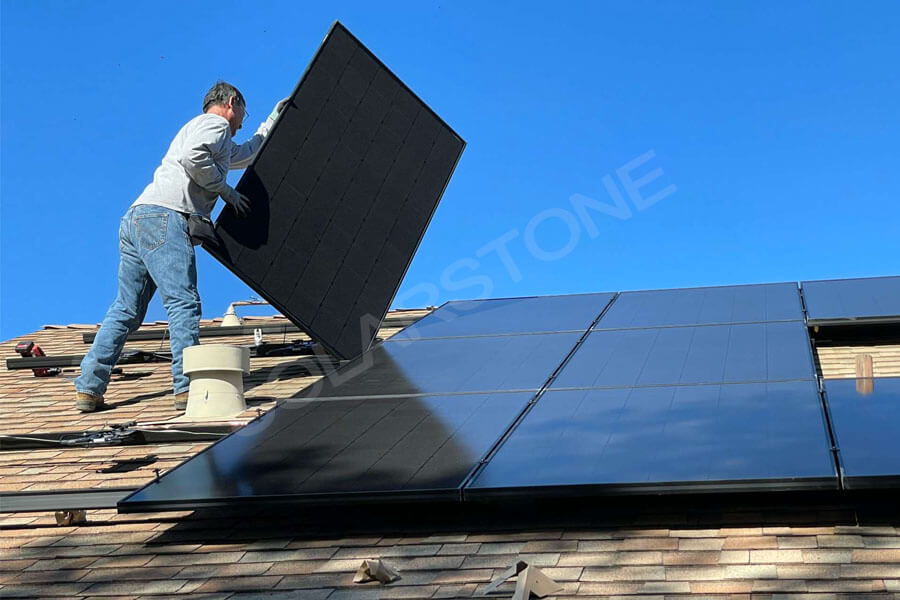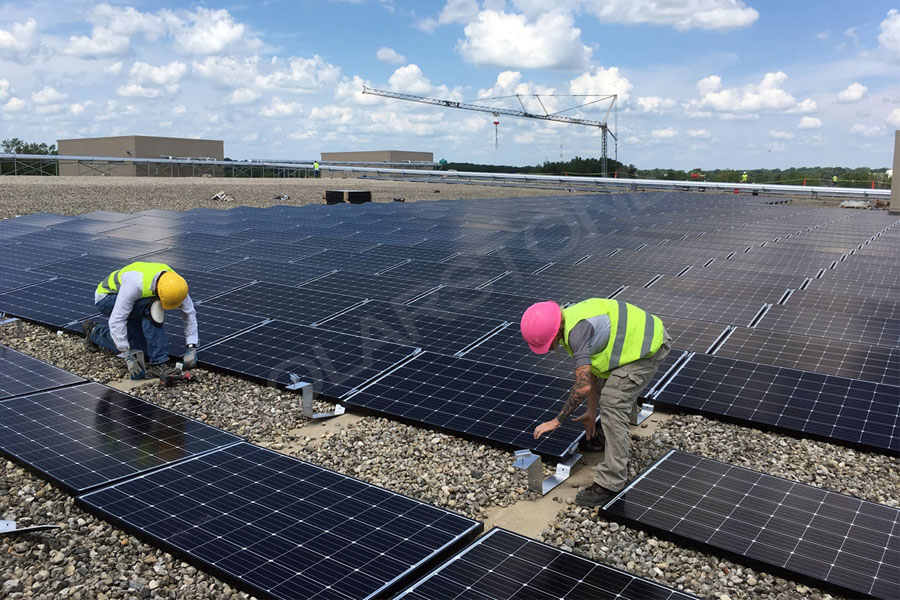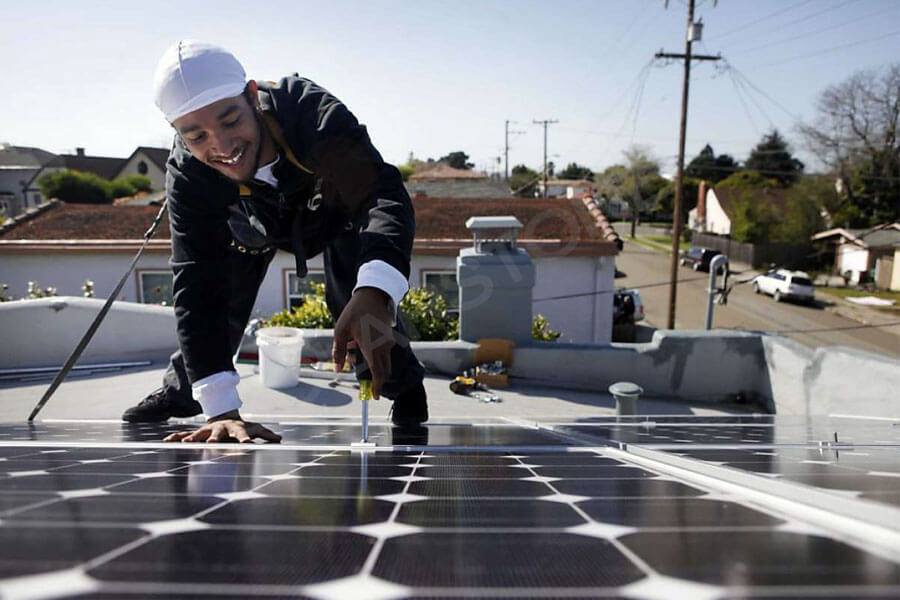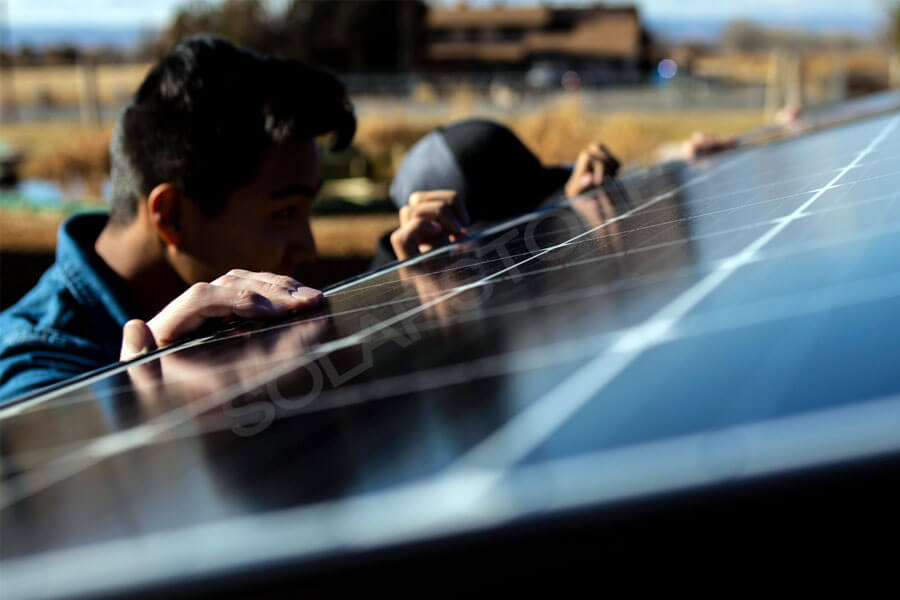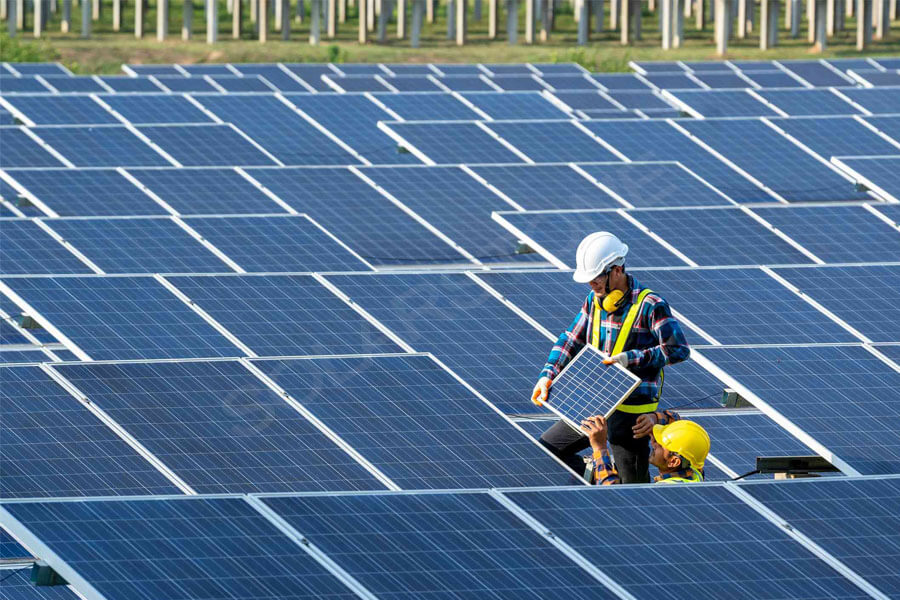The azimuth of solar panel array installation
The azimuth of the solar panel array is the included angle between the vertical plane of the array and the due south direction (the East deviation is set as a negative angle and the West deviation is set as a positive angle).
Generally, in the northern hemisphere, when the square array faces due south (that is, the included angle between the vertical plane of the square array and due south is 0 °), the power generation of solar panels is the largest.
When it deviates from the due south (northern hemisphere) by 30 °, the power generation of the square array will be reduced by about 10% ~ 15%; When it deviates from the due south (northern hemisphere) by 60 °, the power generation of the square array will be reduced by about 20% ~ 30%.
However, in a sunny summer, the maximum time of solar radiation energy is later than noon. Therefore, when the orientation of the square array deviates slightly to the west, the maximum power generation can be obtained in the afternoon.
In different seasons, the peak time of daily radiation in all directions is different. When the orientation of the solar panel array is slightly east or west, the maximum power generation can be obtained.
The square array setting site is restricted by many conditions. If you want to adjust the azimuth to be consistent with the peak time of load and power generation in a day, you can refer to the following formula.
Azimuth = (peak time of load in a day (24-hour system) – 12) × 15 + (longitude – 116)
Inclination angle of solar panel array installation
The solar panel array is usually placed facing the equator and has a certain inclination relative to the ground plane, that is, the included angle between the plane of the solar panel array and the horizontal ground.
For the fixed solar panel array with uniform load throughout the year, if the radiation of the design slope is small, it means that more solar panels are needed to ensure power supply to users; If the solar radiation received by the solar panel array varies greatly in each month, it means that a large number of batteries are needed to ensure the power supply in the month with low solar radiation.
These will increase the cost of the whole system. Therefore, determining the optimal inclination of solar panel array is an indispensable and important link in solar power generation system.
In the design, we hope to get the best tilt angle of the solar panel array when the average power generation is the largest in a year, and the best tilt angle in a year is related to the local geographical latitude.
When the latitude is high, the corresponding tilt angle is also large. However, like the azimuth, the slope angle (slope greater than 50% ~ 60%) of snow sliding should also be considered in the design.
For the tilt angle of snow sliding, even if the power generation is small during the snow period, the annual total power generation also increases. For due south (azimuth angle is 0 °), when the tilt angle gradually transitions from horizontal (tilt angle is 0 °), its daily radiation continues to increase until the maximum value, and then increases the tilt angle, and its daily radiation continues to decrease.
Especially after the inclination angle is greater than 50 ° ~ 60 °, the daily radiation decreases sharply until the final vertical placement, and the power generation decreases to the minimum. When the azimuth angle is not 0 °, the daily radiation value of the inclined plane is generally low, and the maximum daily radiation value is near the inclined angle close to the horizontal plane.
The selection of inclination angle of solar panel array shall be comprehensively considered in combination with the following requirements:
1.Continuity. The total amount of solar radiation changes continuously in a year. Most of them rise and fall monotonously, and some of them fluctuate a little, but generally there are no big ups and downs.
2.Uniformity. Select the inclination angle, and it is best to make the daily average radiation received on the surface of the square array more uniform throughout the year, so as to avoid excessive radiation received in summer and waste; The radiation received in winter is too small, resulting in over-discharge and damage of the battery, reducing the service life of the system and affecting the power supply stability of the system.
3.Maximum. When selecting the inclination angle, not only the month with the weakest radiation on the surface of the solar panel array should obtain the maximum radiation, but also the annual daily average radiation should not be too small.
At the same time, specific analysis should be made for specific situations. For example, some special loads (irrigation water pump, refrigerator, etc.) consume more power in summer, and the value of the inclination angle of the solar panel array should make the solar panel array receive more radiation in summer than in winter.
The above is the relationship between azimuth angle, inclination angle and power generation. For the specific design, the azimuth angle and inclination angle of a solar panel array should be further considered in combination with the actual situation.
For the fixed photovoltaic system, once the installation is completed, the inclination of the solar panel array and the azimuth of the solar panel array cannot be changed. For the photovoltaic system equipped with tracking device, the solar panel array can track and move with the operation of the sun, so that the solar panel always faces the sun, increasing the solar radiation received by the solar panel array.
However, at present, relatively few tracking devices are used in the photovoltaic system, because the tracking device is complex and the initial cost and maintenance cost are high. The benefits of installing the tracking device to obtain additional solar radiation can not offset the cost of installing the system.
Influence of shadow on solar panel array
Generally, when calculating the power generation of solar panels, it is obtained on the premise that there is no shadow on the square array of solar panels. Therefore, if the solar panel cannot be directly illuminated by sunlight, only scattered light is used for power generation, and the power generation at this time is about 10% ~ 20% less than that without shadow.
In view of this situation, the theoretical calculation value should be corrected. Generally, when there are buildings, mountains and other objects around the solar panel array, there will be shadows around the buildings and mountains after the sun comes out.
Therefore, when selecting the location for installing the solar panel array, try to avoid the shadows. If it is impossible to avoid, it should also be solved from the wiring method of solar panels to minimize the impact of shadows on power generation.
In addition, if the solar panel array is placed front and back, the shadow of the front solar panel array will affect the power generation of the rear solar panel array after the distance between the rear solar panel array and the front solar panel array is close.
When the latitude is high, the distance between the solar panel arrays should be increased, and the area of the setting place will increase accordingly.
For the square array with snow prevention measures, its inclination angle is large, so the height of the solar panel square array will be increased. In order to avoid the influence of shadow, the distance between the solar panel square arrays will be increased accordingly.
Generally, when arranging solar panel arrays, the structural size of each solar panel array shall be selected respectively, and its height shall be adjusted to an appropriate value, so as to minimize the distance between solar panel arrays by using its height difference.
The specific design of solar panel array should not only reasonably determine the azimuth and inclination angle, but also comprehensively consider, so as to make the solar panel array reach the best state.



